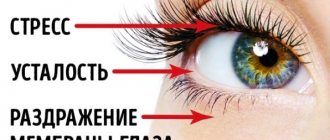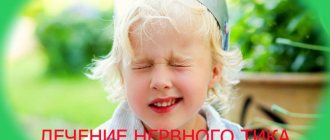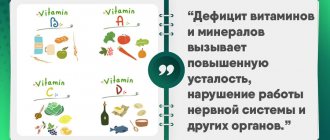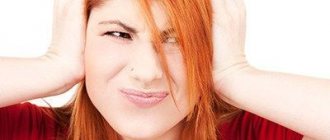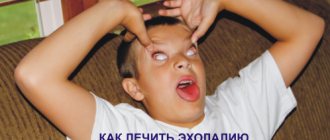Nervous tic of the eye (ocular hyperkinesis)
- a short-term spasm that is caused by an involuntary contraction of the orbicularis oculi muscle.
This muscle belongs to the facial muscles of the head and is located above the anterior parts of the orbit. It consists of several parts (original muscle rings): orbital, pretarsal and preseptal.
The orbicularis oculi muscle is involved in the process of closing the eyelids, protecting the orbit of the eye and removing tear fluid. It is set in motion by nerve impulses sent by the brain. At the moment when a “voltage surge” occurs during the transmission of these messages, the muscle involuntarily contracts for an average of 1-3 seconds. Attacks can be either isolated or constant - the chronic form. Thus, a nervous tic of the eye occurs. Most often it is a symptom of problems with the nervous system, fatigue, high stress levels, eye strain, etc.
In some cases, a nervous tic may be confused with some forms of blepharospasm Blepharospasm
- a disease in which uncontrolled closure of one or both eyelids occurs. This condition may be accompanied by unexpected movements of the mouth, neck or head. - a disease in which uncontrolled closure of one or both eyelids may occur. This condition may be accompanied by unexpected movements of the mouth, neck or head.
Nervous tics can be caused by:
- Psychological fatigue or sudden shock, frequent stress, neurosis.
- Eye fatigue and eye diseases that affect the nerve endings.
- Trigeminal neuralgia and other neurological diseases.
- Infections, intoxication of the body (especially typical for children whose immunity is not yet strong).
- Parasites, helminthic infestations.
- Disturbance of metabolic processes in the body.
- Vitamin deficiency, which causes muscle cramps and spasms.
- Alcohol and drug abuse.
- There are also hypotheses about a hereditary tendency to tics.
Diagnostic features
To make a diagnosis and determine tactics for treating hyperkinesis, doctors at the Leto clinic carefully collect anamnesis starting from birth. If neurosis or depression is suspected, special tests and questionnaires are used to assess the general psycho-emotional status of the patient.
If symptoms appear in adulthood, before treating the syndrome, a comprehensive examination is carried out to exclude possible genetic defects. Consultation with a neurologist is necessary if symptoms indicate pathologies of the nervous system. Sometimes the patient is recommended to undergo CT, MRI or PET-CT (if a tumor is suspected), studies to assess cerebral blood flow.
It is extremely rare that eye tics are a sign of a convulsive seizure in epilepsy, but nevertheless this disease should be excluded, since it can only be cured with the help of individually selected anticonvulsants.
Is nervous tic of the eye dangerous?
A nervous tic itself is not harmful to health, but if the eye twitches regularly and does not always have an obvious cause, such as nervous shock or overwork from working at the computer, it would not hurt to consult a neurologist, because a tic can be triggered by developing serious conditions:
- trauma and organic brain damage,
- infectious diseases of the brain,
- GM tumors,
- stroke, multiple sclerosis, etc.,
- mental illness.
In addition, a nervous tic of the eye can be considered a kind of cosmetic defect, because of which a person may avoid society (or society will avoid him), lose self-confidence, and depression may develop. Therefore, if you are bothered by a twitching eye, you should consult a neurologist.
What causes eye tics: reasons
It is assumed that the pathogenesis of the syndrome is associated with dysfunction of the dopaminergic and serotonergic systems. As a result, an increased response of nerve cells to the action of dopamine leads to excessive excitation of individual subcortical structures of the brain. Such changes are accompanied by involuntary muscle spasms, which are clinically manifested by isolated tics of the right or left eye, upper or lower eyelid, and blinking.
The causes of such disorders of nervous regulation may be associated with hereditary factors. Sometimes eye tics are a consequence of Tourette's syndrome. This is a rare genetic pathology that predominantly manifests itself as tic movements. They occur at an early age and tend to progress without long-term remissions. Mild cognitive and intellectual deficits are also possible; adults often develop anxiety-phobic, depressive, and obsessive-compulsive disorders.
The manifestation of nervous tics of the eyelid in adulthood may indicate another genetic, much more severe, incurable disease - Huntington's chorea. It is characterized by progression of motor coordination disorders, hyperkinesis, and mental disorders.
Important! Tourette's syndrome and Huntington's chorea are diagnosed in less than 1% of patients with ocular tics.
In most cases, the causes of hyperkinesis are directly related to the influence of stress factors. As a rule, symptoms of the disorder first appear after severe psychological trauma.
Secondary ticks
There are also secondary hyperkinesis caused by functional disorders of the central nervous system due to the following reasons:
- traumatic brain injuries;
- malformations of intrauterine development of the central nervous system;
- complicated course of meningitis, encephalitis and other neuroinfections;
- suffered a stroke;
- parkinsonism and other degenerative pathologies of the central nervous system;
- chronic disorders of cerebral circulation due to atherosclerosis, metabolic disorders;
- long-term intoxication (alcohol, drug use, exposure to industrial toxins);
- side effects of antipsychotics, drugs for the treatment of parkinsonism, and some psychostimulants.
For secondary tics of the eye or upper eyelid, therapy is aimed primarily at eliminating the cause of the syndrome.
Treatment and prevention of nervous tics of the eye
- In cases where a nervous tic occurs from overwork and stress, the surest way to get rid of it is to calm down and relax. Breathing exercises, relaxing baths, aromatherapy, and mild sedatives are suitable for this. Adequate sleep is also important.
- To relieve a tic attack, you need to squeeze your eyelids tightly for a few seconds, then relax. Repeat this exercise for 1-3 minutes. You can also blink quickly for 1-2 minutes: targeted muscle contraction can interrupt their involuntary contraction.
- It is important to replenish the supply of vitamins and minerals in the body to protect yourself from cramps, magnesium, calcium and glycine are especially important.
- It is worth giving up any “stimulating” foods, especially tea/coffee, dark chocolate and alcohol.
- Walking in the fresh air and ventilating the room will also help get rid of nervous tics.
If a nervous tic makes you suspicious and is happening more and more often, consult a neurologist. Specialists at the Aximed Neurology Clinic will conduct a full diagnosis of your body, identify the causes of tics and recommend the best methods for getting rid of them. Do not neglect your body; if any manifestations differ from the norm and periodically return, consult experienced doctors.
How to cure hyperkinesis: psychocorrection and drug therapy
You should consult a doctor if eye tics persist for a year or more, or if, in addition to muscle spasms, other signs appear that bother the patient. Cognitive behavioral therapy is considered the most effective, which consists of the following stages:
- Developing the opposite skill. The doctor helps the patient realize that an exacerbation is approaching and teaches him to suppress tic movements using various relaxation techniques.
- Exposure and reaction prevention. At this stage, the psychotherapist’s work is aimed at breaking the subconscious connection between anxiety and involuntary muscle contraction.
- Contingency management. It is important to teach the patient not only to suppress hyperkinesis, but also to understand the nature of this disorder. Therefore, the psychotherapist step by step finds out the causes of the syndrome and gradually changes the perception and reaction to stress factors.
Psychotherapy is usually quite effective, but for severe psychosomatic symptoms, insomnia, and signs of depression, tranquilizers and antidepressants are needed. The necessary drugs are prescribed in tablets, since therapy is carried out on an outpatient basis.
More detailed advice on the treatment of eye tics can be obtained from our operators by phone 8(969)060-93-93.
Botox
Botox Berlin is an integral part of aesthetic medicine. Botox is approved all over the world and has stood the test of time: this youth drug has been officially approved since 1989. Various preparations are presented on the German market under the name “Botox”, such as “Vistabel”, “Dysport”, “Azzalure”, “Xeomin”.
The mechanism of action of botulinum toxin A is based on blocking the release of acetylcholine in the area of the neuromuscular synapse, which causes temporary immobilization of the muscle. Botulinum toxin does not cause nerve damage and does not interfere with the formation of acetylcholine in general. Disturbance in the conduction of neuromuscular impulses, i.e. its blockade causes a change only in functional activity: a temporary stop in the contraction of the facial muscle. As a result of this, the skin over the muscle straightens, facial wrinkles are smoothed out.
By relaxing and smoothing individual facial muscles, Botox injections solve a number of problems. After approximately 3-6 months, this muscle function is restored.
What are drugs based on botulinum toxin A used for?
The therapeutic range of Botox drugs includes about 100 different therapeutic purposes, and the use of Botox in plastic and aesthetic surgery currently occupies one of the first places among all procedures. Even hyaluronic acid began to lose its leadership position.
At the very beginning, Botox preparations were used exclusively to reduce the number and depth of wrinkles. Now, thanks to modern technology for administering the drug in combination with other procedures, it is possible to achieve comprehensive rejuvenation of not only the face, but the neck and décolleté. The art of the doctor lies not only in combating the obvious signs of aging, but also in restoring the structure of the skin to achieve a natural and youthful appearance.
Botox injections (Botox Berlin) in aesthetic and plastic surgery
The main target of Botox injections are expression lines on the upper part of the face. They can appear at the age of 18 simply because you squint in the sun, frown or wrinkle your forehead. The most suitable wrinkles in the upper part of the face are:
These zones have been studied quite well and are the most “resistant” to possible complications.
Thanks to Dr. Kirsten's many years of experience, it has become possible to achieve good results in the treatment of wrinkles in the lower part of the face: in the upper lip area, “perioral wrinkles”, marionette lines extending from the corners of the mouth downwards.
Vertical neck wrinkles, jowls or “bulldog cheeks” also respond well to correction with Botox.
Mesobotox can be used to treat fine wrinkles on the cheeks and décolleté.
Botulinum toxin therapy is indicated for the treatment of facial wrinkles caused by muscle contraction.
Correction of expression lines significantly reduces wrinkles around the eyes, the so-called “crow’s feet”, wrinkles at the corners of the mouth, marionette lines, wrinkles on the forehead and bridge of the nose, as well as wrinkles on the neck and drooping cheeks. Botox injections in the lower part of the face are best combined with hyaluronic acid fillers. During your consultation, Dr. Kirsten will talk about all the possible combinations of Botox procedures that are necessary in your particular case. Efficiency, safety and affordability make Botox injections a popular way to prolong youth. More than 15 years of experience in botulinum toxin injections has allowed Dr. Kirsten to significantly expand the range of Botox applications to the neck and décolleté, where combinations with other rejuvenation methods open up new horizons.
Botox injections for bruxism
Bruxism or odonterism is periodically occurring paroxysmal contractions of the masticatory muscles during sleep, accompanied by clenching of the jaws and unconscious grinding of teeth. Although bruxism is not a disease, teeth grinding can cause a lot of trouble, which especially affects the teeth. Intensive wear of enamel can lead to an increased risk of tooth decay and the formation of caries. One treatment option for teeth grinding while sleeping is to relax the muscles in the mouth and neck, which can be corrected with Botox injections. The effect lasts from 4 to 6-8 months.
Botox injections for hyperhidrosis
About 2% of the population suffers from excessive sweating. The use of botulinum toxin preparations for increased sweating (axillary, palmar, plantar) is the safest, and sometimes the only possible (for example, with plantar hyperhidrosis) method of treating increased sweating. Other methods are ineffective and have significant limitations in application. The action of the drugs is associated with a blockade of the transmission of nerve impulses to the sweat glands, which completely stops the contraction of the sweat glands in the injection area, thereby blocking sweating in the treated area.
What should you pay attention to before the Botox procedure - Botox Berlin?
A week before the procedure, stop taking medications containing aspirin, ibuprofen and vitamin E. If you are taking Marcumar or falytrom (blood thinners), consult your doctor about the possibility of Botox injections. Before your procedure, please tell Dr. Kirsten about any allergies you have. Contraindications for Botox include pregnancy, breastfeeding, and systemic diseases of the nerves and muscles.
How is Botox Berlin performed?
Botox is injected into the areas where wrinkles are located. For this, a very thin short needle is used. Due to the penetration of the drug into the muscles, their facial activity in the treatment area is blocked. The procedure is usually painless; for patients with a high degree of sensitivity, we use anesthetic ointment. After administration of the drug, a cooling bag is applied to the treated area. The duration of the procedure is 10 minutes. Repetition of the course is prescribed individually, taking into account the period of recovery of the patient’s facial expressions.
What should you pay attention to after injection with botulinum toxin A?
Skin care after Botox injection should be carried out as recommended by Dr. Kirsten. You can lead a normal lifestyle immediately after Botox injection, but we advise you to refrain from physical activity with your head tilted down, visiting a solarium, sauna, or exposure to direct sunlight for 10-12 days. Massaging this area is also not recommended.
How long does the effect last and how often can this procedure be repeated?
The effect of the drug appears within the first three to five days after the procedure and reaches its maximum severity after 1-2 weeks. If the effect of the initial treatment is considered insufficient, a correction can be made after 2 weeks during a follow-up visit. Frequent repetition of Botox injections for correction purposes is not recommended due to the development of resistance to Botox (grafting effect). The duration of the effect of Botox reaches 3 months and after 5-6 months the function of facial wrinkles is completely restored. After which the procedure can be repeated. With subsequent injections, the duration of the drug increases to six months.
What complications exist when using botulinum toxin A drugs?
As a rule, side effects after Botox injection are reversible. Dr. Kirsten has extensive experience with Botox. However, as with other medical procedures, complications cannot be ruled out. Complications include swelling, redness, and local pinpoint hemorrhage (hematoma). There is no danger of botulinum toxin poisoning, since the toxic effect occurs at doses a thousand times higher than what you receive when treating wrinkles. Individual intolerance to the drug is possible, which may manifest itself as swelling or allergies.
Also, with an uneven effect of the drug and weakness of the neck muscles, drooping of the eyelids or eyebrows may be observed when Botox is injected in the forehead.
Does the body develop resistance (immunity) against Botox?
For aesthetic purposes, botulinum toxin is used in very small doses and the percentage of development of resistance is quite small, but the possibility of its development still exists. In percentage terms, the development of resistance is about 0.6%. This supposedly happens when unscrupulous medical professionals dilute botulinum toxin with a large amount of saline solution, as a result, the dose of botulinum toxin is small and you are injected with something that is not what you expected and what you paid for. As a result, Botox does not last long.
In our clinic, after administering the drug, Dr. Kirsten gives you a quality guarantee. Two weeks after the procedure, if necessary, you can contact our clinic for a free repeat correction of the treated area.
The effectiveness of Botox for migraines
If the cause of migraine is a spasm of the forehead muscles, then the use of Botox gives good results. Dr. Kirsten will advise you on possible treatments for migraines using botulinum toxin A.
The effectiveness of Botox for nervous tics
Most often, a nervous tic manifests itself in involuntary movements of the muscles of the face and head. The main effect of botulinum therapy is aimed at relaxing the muscles by injecting microdoses of the drug into them. When administered intramuscularly, it blocks neuromuscular transmission. After administration of the drug, the result lasts for about 3-4 months, then the procedure must be repeated.
How much do Botox Berlin injections cost?
Each clinic sets its own pricing policy for Botox injections. Some clinics calculate the price per unit of the drug, others for the treated areas. In our clinic, the cost of injections is calculated based on the area being treated. In addition, this cost includes a control examination with the possible subsequent administration of the required amount of botulinum toxin A. The average cost for one area (for example, frown lines) is 130 Euro. According to German law, doctors do not have the right to publish fixed prices for services on the Internet, since these services are calculated individually, according to GOÄ (Gebührenordnung für Ärzte).
What other procedures can Botox Berlin injections be combined with?
All modern aesthetic procedures, such as mesotherapy, plasma lifting, thermolifting, chemical peeling, laser peeling, thread lifting or fillers can be combined with Botox injections. Dr. Kirsten will explain the sequence of procedures and possible combinations to you during your consultation.
Can a cosmetologist perform Botox injections?
Botulinum toxin preparations themselves are prescription medications and, according to German law, their use can only be carried out by an approved doctor. In addition, to administer Botox, a certain set of knowledge is required: the anatomical structure of muscles, the location of nerves, arteries and veins in the face, neck and décolleté. The drug should be administered by an experienced physician. The consequences of incorrect injections can limit your social activity for several months. We recommend that you carefully consider where and by whom the Botox procedure will be performed.
All aesthetic treatment concepts at Dr. Kirsten's Clinic in Berlin are tailored as closely as possible to your individual needs and characteristics.
Dr. Yuri Kirsten will be happy to take the time to discuss with you all the necessary measures for the treatment and correction of wrinkles using Botox. This consultation is for informational purposes and does not obligate you to further treatment in our clinic.
If you wish, you can schedule a consultation online or by phone.
Eye twitching due to fatigue
Physical and emotional fatigue seriously affects your health. Stressful work and regular lack of sleep can lead to involuntary contractions of the eye muscles. Children today are constantly faced with a colossal load on the visual system. As a rule, they are fond of computer games and gadgets, like to read books and comics in poor lighting, and also watch cartoons for a long time in front of the TV. During all these actions, blinking occurs rarely, as a result of which the nerves and eye muscles begin to be subjected to significant stress.
Recommendations
What can parents do if their child's eye twitches? The main thing is to never scold your child. Positive changes in your condition may not appear as quickly as you expect. Try to create a calm, relaxed environment at home. Offer your child new games. The main thing here is to choose the right hobbies and activities. When treating nervous tics, it is recommended to pay special attention to sports.
Try to constantly monitor the child’s psychophysical well-being. Due to a nervous tic, he may be embarrassed to go out in public and behave with restraint. This leads to serious internal overstrain. Do everything you can to make your child feel comfortable. There is no need to focus on his illness. Let the baby feel like everyone else.
Treatment
Primary nervous tics may disappear on their own, and therapy is aimed only at accelerating recovery. Common activities include:
- Maintaining a daily routine, creating psycho-emotional comfort;
- Communication with a psychotherapist;
- Drug therapy
- Treatment of secondary nervous tics consists of eliminating the cause of its occurrence and treating the underlying disease.
Many years of medical practice have shown that the earlier treatment for tics begins, the faster and more effectively the disease goes away. At the first consultation, medical specialists will tell you how to get rid of this disease and how it can be dangerous. In the future, doctors will develop a suitable therapy program, with the help of which the balance of the nervous system will be restored, and the disease will be completely eradicated.
You can get detailed information and make an appointment at the reception or by phone.
Symptoms
Depending on the muscle group affected, nervous tics are divided into types:
- Mimic – facial muscles are affected;
- Motor – skeletal muscles are affected, including the muscles of the limbs;
- Vocal – the muscles responsible for producing sounds suffer.
Common manifestations of the disease include:
- Small involuntary muscle contractions, which are characterized by their monotony;
- The appearance or intensification of a tic in a stressful, exciting situation;
- The appearance of screams, loud sighs;
- Constant anxiety and restlessness;
- Night sleep disturbance;
- Having trouble remembering and paying attention.
